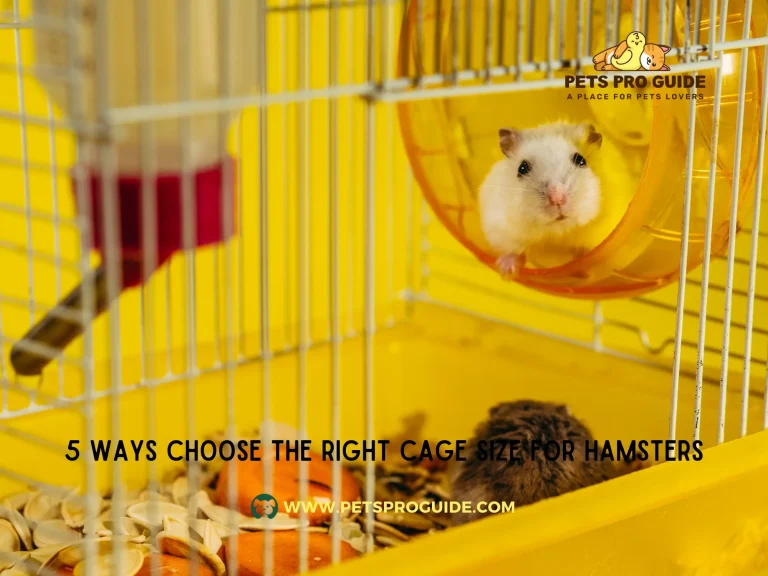Welcome to the comprehensive Lovebirds Cage Size Guide, your go-to resource for creating the perfect habitat for your feathered companions. Ensuring the right cage size is essential for the well-being and happiness of lovebirds, as it directly impacts their comfort, mobility, and overall quality of life.
In this guide, we’ll explore key considerations and expert tips to help you select an ideal cage size that meets the unique needs of your beloved avian friends.
Whether you’re a novice bird owner or a seasoned enthusiast, this guide will empower you to provide a spacious and stimulating environment that promotes health and happiness for your lovebirds.
10 Ways to Choose the Right Cage Size for Lovebirds
1. Consider Minimum Dimensions
When choosing a cage for your lovebirds, prioritize spaciousness. Opt for a cage that offers a minimum width, depth, and height of 24 inches. This ensures ample room for your birds to move around, stretch their wings, and engage in natural behaviors comfortably. Providing sufficient space prevents feelings of confinement and promotes overall well-being for your feathered friends.
2. Opt for Horizontal Space
Lovebirds are active birds that enjoy flying horizontally. Therefore, select a cage with more width than height to accommodate their natural behavior. Horizontal space allows lovebirds to move freely and explore their environment, contributing to their physical and mental health. Encouraging active play helps prevent boredom and encourages a happy, well-adjusted pet.
3. Avoid Round Cages
While round cages may seem aesthetically pleasing, they are not suitable for lovebirds. Round cages lack sufficient space and may restrict movement for these active birds. Rectangular or square-shaped cages provide better room for lovebirds to move, perch, and exercise their wings. Additionally, these cage shapes allow for easier placement of perches, toys, and other cage accessories to enhance your lovebirds’ living environment.
4. Bar Spacing Matters
Ensure that the spacing between the bars of the cage is no wider than 1/2 inch. This prevents lovebirds from escaping or getting their heads stuck between the bars. Optimal bar spacing maintains the safety and security of your birds while allowing them to explore their surroundings freely. By choosing a cage with appropriate bar spacing, you provide a secure and comfortable home for your lovebirds to thrive in.
5. Provide Vertical Space
In addition to horizontal space, lovebirds also benefit from vertical space within their cage. Look for cages with multiple levels or platforms to maximize their living area. Vertical space allows lovebirds to climb, perch, and explore their surroundings in various dimensions, promoting physical activity and mental stimulation. Incorporating vertical elements into the cage design enriches your lovebirds’ environment and enhances their overall quality of life.
6. Include Perches of Varying Thickness
Offer a variety of perches with different diameters to promote foot health and exercise for your lovebirds. Natural wood perches are ideal as they mimic the branches found in the wild. Varying perch thickness helps prevent foot problems such as bumblefoot and encourages your lovebirds to exercise their feet and leg muscles. Providing a range of perches also adds interest and diversity to the cage environment, allowing your birds to choose their preferred resting spots and activities throughout the day.
7. Consider Bar Orientation
Horizontal bars on the sides of the cage provide ideal climbing opportunities for lovebirds. Ensure that the cage design allows them to grip and move around easily. Horizontal bars mimic tree branches in their natural habitat, offering lovebirds the chance to engage in climbing and exploration activities. By selecting a cage with appropriate bar orientation, you create a stimulating environment that encourages natural behaviors and physical exercise for your feathered companions.
8. Allow Room for Accessories
Leave ample space inside the cage for essential accessories such as food and water dishes, toys, and enrichment items. A clutter-free environment facilitates movement and exploration, preventing stress and promoting mental well-being for your lovebirds. Ensure that cage accessories are strategically placed to maximize usable space and provide your birds with opportunities for physical and mental stimulation. By creating a comfortable and enriching environment, you enhance the quality of life for your lovebirds and strengthen the bond between you and your feathered companions.
9. Plan for Flight Space
Dedicate a portion of the cage for flight and wing-stretching exercises. Avoid overcrowding the cage with too many accessories or perches that restrict flying space. Flight space is essential for maintaining your lovebirds’ physical health and allowing them to engage in natural behaviors. Providing ample room for flight encourages exercise and promotes cardiovascular health for your birds. By prioritizing flight space in the cage layout, you create a dynamic environment that supports your lovebirds’ natural instincts and encourages active play and exploration.
10. Monitor Behavior and Comfort
Observe your lovebirds’ behavior regularly to ensure they are comfortable and content in their cage environment. Watch for signs of stress, boredom, or discomfort, and make adjustments to the cage setup as needed. Providing a stimulating and enriching environment tailored to your lovebirds’ needs promotes their overall well-being and happiness. By monitoring their behavior and comfort levels, you can address any issues promptly and create a safe, nurturing space where your lovebirds can thrive and flourish.
Final Thoughts
In conclusion, providing the right cage size for your lovebirds is crucial for their health and happiness. By considering their natural behaviors and needs, you can create a stimulating and comfortable environment that enhances their well-being. Invest in a spacious and well-equipped cage to ensure a fulfilling life for your feathered companions.
Read More
- 10 Health Benefits of Pet Fish
- Can Pet Fish Recognize Their Owners?
- Friesian Horse Breed Profile
- American Quarter Horse Breed Profile
- Andalusian Horse Breed Profile



